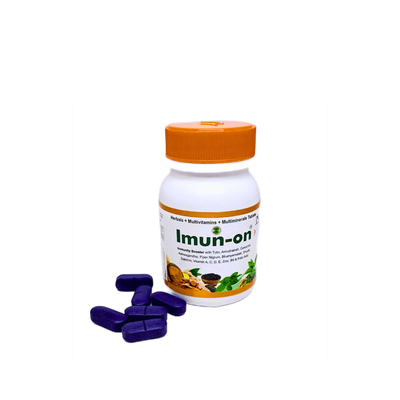Physiotherapy stands as a cornerstone in the realm of healthcare, offering a beacon of hope and recovery for those grappling with physical ailments. This expansive field encompasses a myriad of specialized modalities, each tailored to address specific conditions and enhance patients' overall well-being. In this detailed exploration, we delve into the multifaceted world of physiotherapy, uncovering the nuances of various treatments such as aquatic therapy, manual therapy, neurodynamic therapy, and more, to illuminate their distinct benefits and applications.
1. Aquatic Therapy: Healing in the Harmony of Water
Aquatic therapy harnesses the therapeutic properties of water to offer a gentle yet effective rehabilitation environment. Ideal for a wide range of conditions, from orthopedic injuries to neurological disorders, this modality leverages water's buoyancy, resistance, and hydrostatic pressure to facilitate healing.
Benefits:
- Enhanced Mobility: The buoyancy of water reduces the effect of gravity, allowing for increased joint mobility and reduced pain during exercises.
- Muscle Strengthening: Water resistance provides a natural and adjustable form of resistance training, crucial for muscle rebuilding and strengthening.
- Improved Circulation: The hydrostatic pressure aids in reducing swelling and improving blood circulation, accelerating the healing process.
2. Manual Therapy: The Art of Hands-on Healing
Manual therapy is a cornerstone of physiotherapy that encompasses a variety of techniques, including manipulations and mobilizations, aimed at alleviating pain, improving range of motion, and facilitating tissue healing. It's particularly effective for musculoskeletal disorders, providing relief and recovery through expert hands-on interventions.
Benefits:
- Direct Pain Relief: Techniques such as soft tissue massage and joint mobilizations directly target areas of discomfort, offering immediate pain relief.
- Restoration of Movement: Manual therapy can effectively restore mobility to stiff joints and tissues, enhancing functional movement.
- Tissue Healing: Through improved circulation and lymphatic drainage, manual therapy promotes the healing of injured tissues.
3. Neurodynamic Therapy: Nurturing the Nervous System
Neurodynamic therapy is a specialized approach that addresses dysfunctions within the nervous system. It's particularly beneficial for conditions involving nerve entrapment or neuropathies, employing gentle mobilizing techniques to restore the normal glide and function of nerves within their pathways.
Benefits:
- Relief from Neural Pain: By freeing restricted nerves, neurodynamic therapy can significantly reduce neuropathic pain.
- Improved Nerve Function: This therapy enhances the conduction and flexibility of nerves, contributing to better overall neural health.
- Increased Range of Motion: Restoring normal neural dynamics leads to improved range of motion and decreased mechanical stress on the nervous system.
4. Electrophysical Modalities: Harnessing the Power of Energy
Electrophysical modalities encompass a range of treatments that utilize forms of energy, such as electrical currents, ultrasound, and laser, to aid in the healing process. These therapies can accelerate tissue repair, reduce pain, and decrease inflammation, making them invaluable in various phases of rehabilitation.
Benefits:
- Accelerated Tissue Repair: Modalities like ultrasound and laser therapy can stimulate cellular activity, promoting faster tissue repair.
- Pain Management: Electrical stimulation therapies, such as TENS, can modulate pain pathways, providing significant pain relief.
- Inflammation Reduction: Techniques like cold laser therapy can help reduce inflammation, aiding in the recovery of injured tissues.
5. Exercise Therapy: Building Strength, Stability, and Mobility
Exercise therapy is the backbone of physiotherapy, involving personalized exercise programs designed to strengthen muscles, improve flexibility, and enhance cardiovascular health. Tailored to individual needs, these programs are essential for recovery from injuries, surgical interventions, and managing chronic conditions.
Benefits:
- Musculoskeletal Strength: Targeted exercises strengthen weakened areas, providing support and stability to joints and reducing the risk of re-injury.
- Improved Flexibility and Range of Motion: Regular, guided exercise promotes flexibility, aiding in the recovery of movement and function.
- Cardiovascular Health: Aerobic exercises incorporated into therapy sessions contribute to overall cardiovascular health and endurance.
6. Vestibular Rehabilitation: Restoring Balance and Equilibrium
Vestibular rehabilitation is a specialized form of therapy aimed at alleviating symptoms associated with vestibular disorders, such as dizziness, vertigo, and balance issues. Through a series of exercises and manual techniques, this therapy seeks to retrain the brain to recognize and process balance information correctly.
Benefits:
- Symptom Reduction: Effective in reducing the intensity and frequency of dizziness and vertigo episodes.
- Improved Balance: Exercises enhance proprioception and coordination, crucial for maintaining balance and preventing falls.
- Increased Confidence: As symptoms improve, patients often experience increased confidence in their mobility and daily activities.
7. Respiratory Physiotherapy: Enhancing Pulmonary Function
Respiratory physiotherapy focuses on improving lung function and aiding in the clearance of secretions for individuals with respiratory conditions. Techniques include breathing exercises, chest percussion, and postural drainage, tailored to enhance pulmonary health and ease breathing.
Benefits:
- Improved Breathing Efficiency: Techniques like diaphragmatic breathing improve the efficiency of breathing patterns.
- Secretion Management: Chest physiotherapy aids in the mobilization and clearance of pulmonary secretions.
- Enhanced Oxygenation: Improved ventilation and breathing techniques can lead to better oxygenation of the body.
The field of physiotherapy is rich and diverse, offering a plethora of specialized modalities designed to cater to the unique needs of each individual. From the soothing embrace of aquatic therapy to the precision of manual interventions and the targeted approach of exercise therapy, physiotherapy holds the key to unlocking a higher quality of life for those in recovery. As we journey through the intricate landscape of these therapies, it becomes evident that physiotherapy is not just about rehabilitation; it's about empowering individuals to reclaim their independence, achieve optimal health, and embrace life to its fullest.



